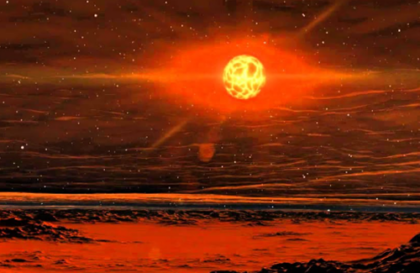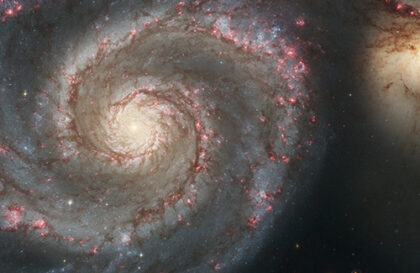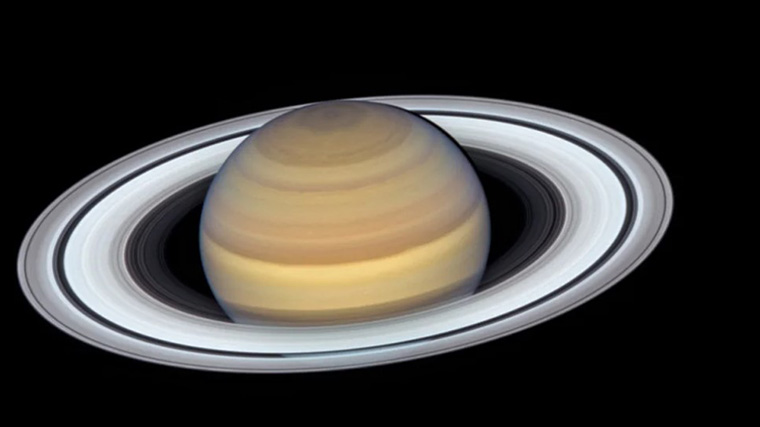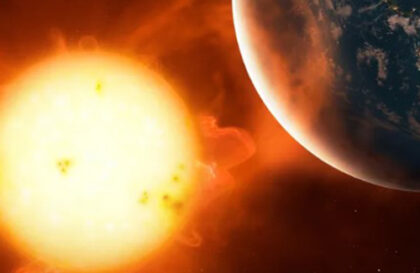A Neptune-sized planet denser than steel may result from a giant planetary collision. So says an international team of astronomers led by Luca Naponiello from the University of Rome Tor Vergata and the University of Bristol.
TOI-1853b’s mass is nearly double that of any known planet of similar size, and its density is incredibly high, meaning it is made up of more rock than would typically be expected at this scale.
This planet provides new evidence for the prevalence of giant impacts in planet formation throughout the galaxy. This discovery helps link solar system-based theories of planet formation to the formation of exoplanets. The discovery of this extreme planet provides new insight into the formation and evolution of planetary systems.
The scientists found that the original planetary body likely had to be rich in water and undergo an extreme giant impact of over 75 km/s to form TOI-1853b, as observed.
Senior research fellow and co-author Dr. Phil Carter from the Bristol School of Physics explained: “We have strong evidence for high-energy collisions between planetary bodies in our solar system, such as the existence of Earth’s Moon, as well as strong evidence from a small number of exoplanets.”
“We know that there is a huge diversity of planets in exoplanet systems; many of them have no analogs in our solar system but often have a mass and composition between that of the rocky planets and Neptune/Uranus (the ice giants).
“Our contribution to the study was to simulate extreme giant impacts that could potentially remove lighter atmosphere and water/ice from the original larger planet to produce measured extreme densities.”
Graduate student and co-author Jingyao Dou said, “This planet is amazing! We would normally expect planets formed from so many rocks to become gas giants like Jupiter, which have a density similar to water.
TOI-1853b is the size of Neptune but has a density higher than steel. Our work shows that this can happen if the planet experiences extremely energetic collisions between planets during its formation.
These impacts destroyed some lighter atmosphere and water, leaving a high-density planet significantly enriched in rocks.”
The team is now planning detailed follow-up observations of TOI-1853b to try to detect remnants of the atmosphere and study its composition.
Associate Professor and co-author Dr Zoe Leinhardt concluded: “We have not previously examined such extreme giant impacts as they are not something we expected. Much work remains to be done to improve the material models underlying our simulations and expand their capabilities. Simulated range of extreme giant impacts.”
Uniqueness of TOI-1538b
A simulation of an impact that might have created TOI-1538b. Credit: Jingyao Dou.
TOI-1538b is a unique and exciting object for astronomers and planetary scientists to study.
The planet orbits its star every 1.24 days, indicating proximity to its sun.
It is classified as a “Hot Neptune” in the “Hot Desert,” which implies high temperatures and no significant water resources at the surface.
Such nearby hot Neptunes are rare, defying scientists’ initial expectations for the frequency of their occurrence.
TOI-1538b has a mass of approximately 75 Earth masses, with a radius 3.5 times that of Earth. This is significantly larger than most known “hot Neptunes.”
The planet has a density of about 9.7 g/cm³, which is higher than most planets of its class and close to the density of some metals, such as steel. This indicates a significant presence of rocky or metallic materials.
The planet challenges traditional theories of planet formation because its characteristics do not fully correspond to established models. This makes TOI-1538b particularly interesting to study, as it could provide new data for understanding planet formation and evolution.
Banner image: An artist’s conception of a hot Neptune. TOI-1853b is a super-dense version of this type of exoplanet, and its core is denser than steel. Courtesy Pablo Carlos Budassi, CC BY-SA 4.0.
Image credit:
https://www.universetoday.com
https://www.universetoday.com






